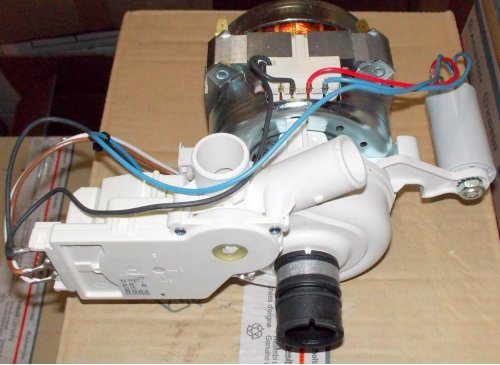Transporting a dishwasher
 If you don’t think about how to transport a dishwasher and do it on a whim, you are putting your “home assistant” at great risk. It often happened that machines broke down after transportation, and then it turned out that their control module and circulation pump were broken. Is it really all about improper transportation? Partly the issue is really due to improper transportation, and partly due to improper start-up after transportation. But let’s not rush, but discuss everything in order, within the framework of the article.
If you don’t think about how to transport a dishwasher and do it on a whim, you are putting your “home assistant” at great risk. It often happened that machines broke down after transportation, and then it turned out that their control module and circulation pump were broken. Is it really all about improper transportation? Partly the issue is really due to improper transportation, and partly due to improper start-up after transportation. But let’s not rush, but discuss everything in order, within the framework of the article.
Preparation of equipment
Why are there rules for transporting a dishwasher? What is so terrible about this household appliance and why does it suffer so much during transportation? A modern dishwasher has many electrical and electronic parts that, for obvious reasons, do not tolerate contact with water. That is why electrical, and especially electronic elements, are isolated from modules and parts through which water is pumped. While the machine is in working position, everything is in order, but during transportation this order will inevitably be disrupted.
The dishwasher is designed in such a way that there is water in it even after it is turned off. If the case is turned over, and even shaken on an uneven road, water can get on the electronics, and the subsequent connection of the equipment to the network will complete the job. To avoid such problems you should:
- properly turn off and remove the machine;
- drain the water that remains in the dishwasher;
- insulate the body so that it is not damaged during transportation.
If you still have the packaging with shipping inserts, it is better to use it after packing the machine.
How to turn off equipment? First you need to turn off the water supply to the dishwasher and turn off the electricity. Next, you need to disconnect and secure the inlet hose to the body. The same should be done with the drain hose and power cord. If we are talking about a built-in dishwasher, you should remove the latches and then remove the machine from the niche. Try to keep the body vertical; there is no need to tilt it, much less turn it over.
- Open the washing chamber and remove the dish baskets and cutlery tray.
- Remove the sprinklers and place them with the baskets. It is better to transport these elements separately.
- At the bottom of the washing chamber there is a garbage filter and a salt container. Our task is to remove water from the waste filter sink and from the salt container. Opening the salt reservoir Samsung dishwasher or any other, take a large syringe or rubber bulb and start pumping out the water.
- Having removed the water from the salt tank, we will do the same with the waste filter sink.
- Close the salt container and return the garbage filter to its place.
- We insert rubber plugs into the drain and inlet hoses.
- We close the dishwasher door, put a large plastic bag on the body of the machine, and wrap the body with foam rubber. If you still have the original packaging, you can do without foam rubber.
That's it, the washing machine is ready for transportation. Now you need to make sure that it is safely brought to the vehicle and transported safely.
Features of loading and transportation
Before you decide to transport your dishwasher, you need to arrange for an assistant and suitable transport. Don't try to carry the dishwasher alone.It, of course, weighs less than a washing machine, but it’s still quite a lot, and most importantly, it’s bulky and inconvenient to carry it alone.
The vehicle must be within walking distance from the house. The dishwasher body should fit into it without any problems. It is not very convenient to transport large equipment in a miniature washing machine. Be sure to make sure in advance that the equipment will fit into the machine, prepare the place, cover with rags all the corners on which the dishwasher could theoretically get caught, and then start loading.
Act carefully and be sure to work together: one holds, the other pushes. Insure each other so as not to accidentally drop expensive equipment. Do not place the dishwasher on the roof of the washing machine on a metal rack. Even securely tied, it can “jump away” on bumps in the road and this will be the worst case scenario. If you are using a truck or minibus, make sure that the vehicle is securely fastened so that it does not get thrown around the body or interior during the trip.
When transporting your “home assistant”, try to drive as carefully as possible. Don't speed or drive too hard on bumpy parts of the road. Be reasonable.
Some users ask: is it possible to transport a dishwasher lying on its side? Experts do not see any problem in this, the main thing is that the water is removed from the washing machine in advance. If water leaks from the machine and you notice it, do not turn it on until it has dried thoroughly.
Transporting a new dishwasher
If you just purchased a dishwasher and are planning to take it home yourself, give up this idea.Most stores have free shipping. It's better to wait a little and let the professionals deliver it. In general, transport a new dishwasher yourself only as a last resort, when there is no other option. Let's explain why.
All new dishwashers are tested at the factory where they were assembled. After these tests, no one drains the water from them completely, as expected. For some reason, manufacturers don’t think about the fact that transporting washing machines with water is dangerous (although not all of them). Imagine that you load a new machine into your washing machine and take it home with difficulty, but at home you plug it in and it closes. In such a situation, your guarantee will be “covered with a copper basin”, and you will never prove that the breakdown was not your fault.
In general, you understand where we are going. The situation is unpleasant, but some frivolous buyers end up in it. If you ask the salesperson to help you drain the water from the machine you just bought, they will twist their finger at their temple. No one will help you, and they won’t allow you to do it yourself in the store either. In short, order delivery and then, if something happens, you can blame the carrier.
So, transporting a dishwasher, as well as preparing it for transportation, must be carried out according to certain rules. Otherwise, you can completely lose your equipment, or you can end up with expensive repairs, which is also unpleasant. Good luck!
Interesting:
1 reader comment






















Can plastic parts break in the dishwasher when transported lying down?